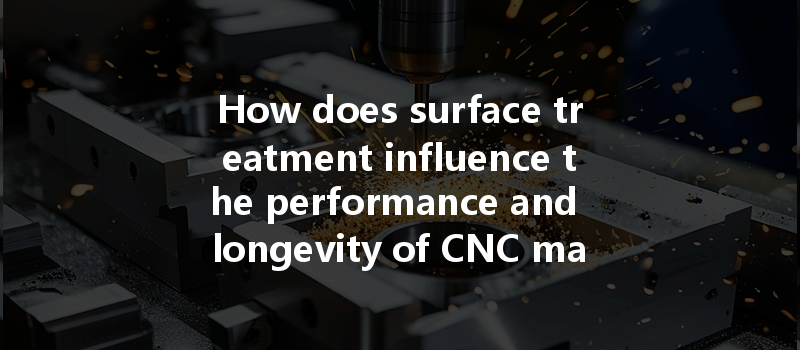Opening: An Intriguing Fact
Did you know that nearly 70% of manufacturing defects can be traced back to surface-related issues? In the world of CNC machining, the surface quality and treatment of parts can significantly impact their performance and longevity. As industries increasingly demand precision and durability in components, understanding the role of surface treatment has become paramount. This blog aims to unravel the complexities of surface treatment in CNC machining, exploring its effects on material properties and the longevity of machined parts.
Understanding Surface Treatment in CNC Machining
Surface treatment refers to a variety of processes that improve the surface characteristics of materials. In CNC machining, these treatments are crucial for enhancing durability, resistance to wear, and overall functionality. Common surface treatment techniques include anodizing, plating, coating, and polishing, each serving different purposes and offering unique benefits.
Types of Surface Treatments and Their Effects:
Influence on Performance
The performance of CNC machined parts is heavily influenced by the type of surface treatment applied. Here’s a closer look at how these treatments can enhance various performance attributes:
Components subjected to friction and wear benefit significantly from appropriate surface treatments. For example, tool steels can achieve increased hardness and reduced wear through hardening treatments, making them suitable for high-stress applications. Anodizing aluminum also provides a more wear-resistant surface, prolonging the component’s life.
Parts exposed to corrosive environments, such as marine and chemical applications, must resist oxidation and corrosion. Anodizing and electroplating are effective methods to enhance corrosion resistance, ensuring that even in extreme environments, the integrity of the part remains intact over time.

Surface treatments also play a crucial role in thermal stability. Properly treated surfaces can withstand elevated temperatures without degrading, which is essential in applications like engine components and aerospace parts. Treatments such as oxidation help create a protective layer that prevents overheating and material degradation.
While performance is critical, the aesthetic quality of parts cannot be overlooked. Surface treatments like polishing and anodizing not only improve performance but also enhance the visual appeal. For industries where aesthetics matter, such as automotive and consumer electronics, surface treatment can add significant value.
Longevity of CNC Machined Parts
The longevity of CNC machined parts is inherently tied to the quality of the surface treatment. Here are essential considerations for maximizing the lifespan of components through effective surface treatment:
Selecting the right surface treatment method depends on numerous factors, including the environment in which the part will operate, load conditions, and the materials being machined. Conduct thorough material compatibility tests to ensure the chosen surface treatment aligns with the demands of the application.
Implementing stringent quality control measures during the surface treatment process is essential. This includes monitoring treatment thickness, adhesion properties, and overall finish quality to avoid defects that could compromise performance and longevity.
Even with optimal surface treatment, parts will require maintenance to ensure longevity. Regular inspections can identify wear or damage that surface treatments may not fully shield against. Implementing a maintenance schedule can help in early detection of issues, ensuring the efficiency and longevity of CNC machined parts.
The initial surface quality resulting from the CNC machining process can significantly affect the effectiveness of the surface treatment. Selecting appropriate machining parameters (speeds, feeds, tool selection) contributes to a baseline surface quality that improves the outcome of subsequent surface treatments. Quality cutting tools and optimal machining conditions will yield better results in terms of surface finish and integrity.
: The Integral Role of Surface Treatment
In conclusion, surface treatment is not merely an addition to the CNC machining process but a fundamental aspect that significantly influences the performance and longevity of machined parts. Anodizing, electroplating, coating, and polishing each offer unique benefits that cater to various industrial applications. By selecting the appropriate treatment, ensuring stringent quality control, and conducting regular maintenance, manufacturers can enhance not just the aesthetics of their products but also their functional lifespan.
Understanding the vital role surface treatments play in CNC machining is essential for manufacturers aiming for excellence. With the stakes high in competitive markets, utilizing advanced surface treatment technologies can lead to improved product quality, enhanced customer satisfaction, and ultimately, better business outcomes.
As we navigate the evolving landscape of manufacturing, it’s crucial for industry professionals to stay informed about the latest developments in surface treatment technologies. They hold the key to unlocking a future of durable, high-performance components designed to meet the demands of an ever-changing global market.






